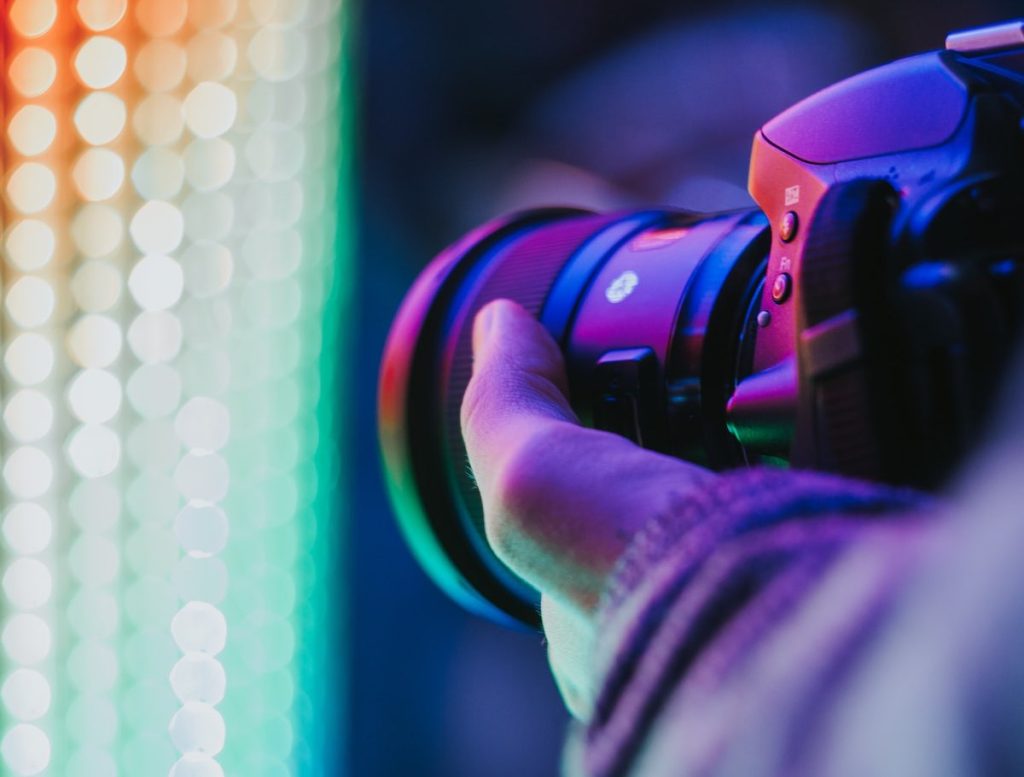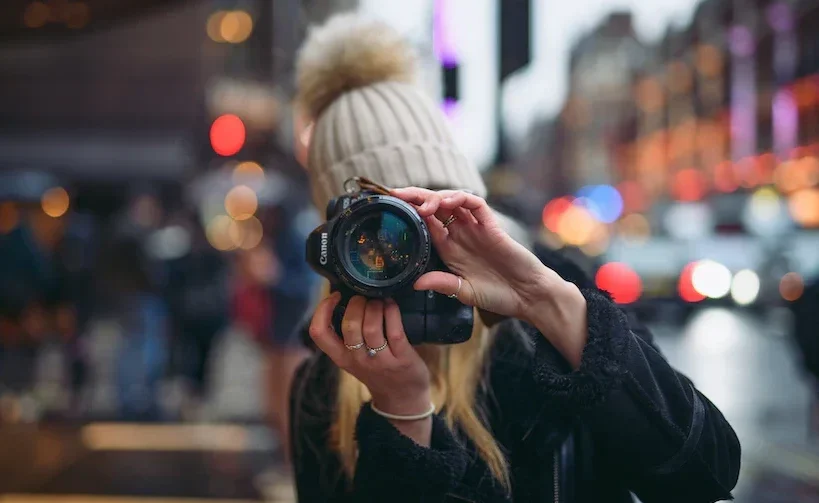Whenever I think of a useful photography tip, I always write it down for later. Most of them are forgettable, but some are so helpful that I try to tell them to as many photographers as possible. This article contains 21 of the best. These bite-sized photography tips are easy to understand, covering everything from beginner camera techniques to creativity and composition. If you’re learning photography, these should be especially helpful for you along the way.
1. Work with Your Composition
To take engaging photos, you need to be engaged with what you’re doing. Don’t just fly by on autopilot. Instead, put thought into your composition and try to make your photos as good as possible.
That starts with knowing the basics of how to compose good photos. Don’t cut off important parts of your subject with the edge of your frame. Keep your horizons level, and try to eliminate any distractions in your photo by adjusting your composition. See if your photo has a sense of balance and simplicity.
If the photo doesn’t look good on your first try, keep experimenting until you get it right. It is so easy to depress the shutter when something looks good and then stop, but if you consider a few alternative compositions, chances are one of them will be better than the first.
2. Use the Camera You Already Have
Camera gear is not all that important.
There are countless cameras, lenses, and other accessories on the market today. We spend a lot of time reviewing them at Photography Life, and it’s true that some are better than others (or better suited for a given job). But once you’ve tested enough of them, the real takeaway is that pretty much everything today is excellent. The differences are almost always minor, especially at a given price.
So, use the camera you already have, and don’t look back. In almost every way, today’s entry-level mirrorless cameras are better than the top-of-the-line film SLRs or even the DSLRs of ten years ago. Yet, somehow those film photographers managed to capture beautiful, iconic photos that still look great today.
Much more important are your creative skills and knowledge of camera settings. Focus your effort on those, not on collecting camera equipment.
3. Learn Which Settings Matter
There are a lot of camera settings, and it takes some practice to get them right, especially as a beginner. Even advanced photographers won’t always do everything perfectly. But it’s worth learning how to set your camera properly, and which camera settings matter the most, so you have the best chance to take the photos you want.
First, try practicing with camera modes other than full Auto. You won’t learn anything if your camera is making all the decisions for you. It might be confusing at first, but hopefully, our articles on aperture, shutter speed, and ISO will give you a good head start. Those are the three most important settings in all of photography.
Aside from aperture, shutter speed, and ISO, learn how to focus properly by practicing with the different autofocus modes. You’ll probably prefer single-servo autofocus (also known as One-Shot AF) for stationary subjects, and continuous-servo autofocus (also known as AI Servo) for moving subjects. Don’t use manual focus unless it’s so dark that autofocus isn’t working.
Lastly, shoot in Raw if you want to edit your photos, or think there’s any chance you’ll edit them in the future. JPEGs look good out of the camera, but the files have much less latitude for post-processing. (If you aren’t sure, shoot RAW+JPEG, and keep the RAWs for later just in case.) See RAW vs JPEG for more.
4. Don’t Overexpose Highlights
When you are picking your camera settings, it is critical to avoid overexposing highlights in a photo. The reason? It’s simply impossible to recover any detail from white areas of a photo. Personally, I prefer the sky in my photos to have nice texture and color, rather than being just a big, featureless blob, and I bet you do too.
It’s pretty easy to keep your highlights intact. But this is where shutter speed, aperture, and ISO are so important. These are the only camera settings that directly affect the brightness of a photo (ignoring flash settings, of course). Even exposure compensation – an important setting itself – just tells your camera to change one or more of these three variables.
When you’re taking photos, watch the camera screen to see if there is any overexposure. If there is, the first thing you should do is lower your ISO to its base value (usually ISO 100). If it’s already there, use a faster shutter speed. That will take care of the issue. As for the aperture, make sure it isn’t set to a crazy value (f/32, f/45, etc.) and you’ll be good.
If your camera is mirrorless and has a histogram or zebras, enable them. These tools allow you to check your exposure and more easily get a properly-exposed photograph.
5. Pay Attention to the Light
Probably the single most important part of photography is light. If you take a photo with good light, you’ve taken a huge step toward getting a good picture. But what counts as good light? It’s not all about sunsets.
Often, the goal here is to balance the light’s intensity between your subject and background. Even if you’re photographing an amazing sunset, the photo could be ruined by a completely dark and silhouetted foreground.
The easiest way to solve this is to pay attention to the direction and softness of the light. If the light is too harsh, you could get bad shadows going across your subject, which is especially a problem for portrait photography. If the light is coming from an unflattering angle, see what you can do to move the light source (in a studio) or move the subject (outdoors) – or wait until the light is better (landscape photography).
Also, if you’re taking handheld pictures, make sure there is enough light. If not, use a flash or move where it’s brighter. The easiest way to get bland, discolored photos is to shoot in environments without enough light.
6. Take Your Time
It’s easy to make mistakes in photography if you aren’t careful. The best way around this is to slow down and take your time whenever possible, particularly when you are first beginning to learn photography.
First, double-check your camera settings. If you’re shooting outdoor portraits on a sunny day, but you’re using last night’s settings for photographing the Milky Way, something is terribly wrong. Slow down and take the time to get it right.
Then, keep the same mindset for every other important decision. Is your composition as good as possible? Did you autofocus in the right place? Have you done everything possible to improve the lighting conditions?
And don’t listen to people who tell you to avoid reviewing photos in the field. Sure, it’s a bad idea to review photos when something amazing is happening in front of you, but you’ll almost always have some downtime between shots. Figure out the problems with an image in the field – not back at your computer.
7. Move Your Feet
It’s easy to get stuck in one place while you’re taking pictures. Don’t fall into that trap. Instead, move your feet (or your tripod) as much as possible. Climb on top of things, change the height of your camera, walk forward and backward, do whatever you need to do – but keep moving.
If you take a dozen photos from the same height, facing the same direction, without moving your feet or tripod at all, guess what? They won’t be very different. If your entire portfolio is taken from the same height and without any experimentation, you’re missing out on some great photos.
Moving around is the only way to change the relative sizes and positions of the objects in your photo. Don’t like that your subject is too big and the landscape in the background is too small? Stand back and zoom in. Want to fix a rock that looks distracting? Move around until it’s out of your composition, or too small to be a nuisance.
For wildlife photography, pay very close attention to the angle and height of your shot. Animals usually look better when you are at eye level with them, and it also tends to give backgrounds that are farther away, giving more subject isolation.




